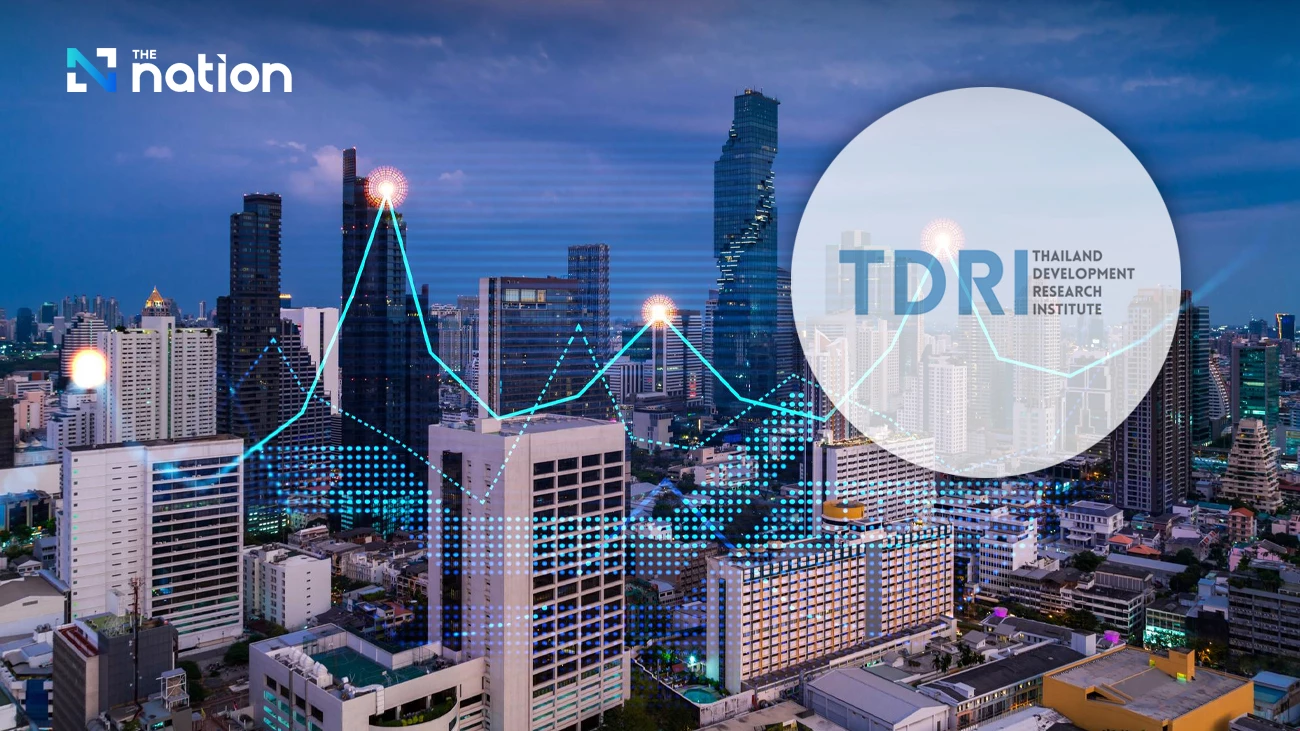Dr Somkiat stressed that the most important solution is to create “Good Jobs” — jobs that provide adequate income, benefits, safety and career advancement. Good Jobs, he said, underpin social stability, political stability and sustainable economic growth.
“Good Jobs can only exist if citizens have higher skills, the production system is strong and businesses can compete globally,” he said.
He likened the economy to an aircraft powered by four spending engines — consumption, private investment, government spending and exports — and four production engines — agriculture, industry, services and public services. Thailand, he argued, has focused too heavily on stimulus and spending, while neglecting production, leaving the country overburdened and unable to accelerate growth amid household debt, weak investment and difficult export conditions.
Thailand’s production sector faces three major structural problems:
• severe labour shortages,
• falling birth rates,
• high numbers of deaths from accidents and pollution each year,
• labour loss from military conscription (70,000 men annually),
• low education quality that fails to raise productivity,
• shrinking public investment due to high fixed expenditure,
• limited FDI that does not sufficiently integrate with the Thai economy, and
• outdated regulations that hinder new investment.
“Thailand still produces low-productivity goods. Agriculture remains a commodity business competing on price. R&D investment is very low, and resources are distorted by poorly targeted policies,” Dr Somkiat said.
He noted that Thailand is being squeezed from all sides:
the US has raised tariffs to the highest in decades,
Europe has introduced environmental trade measures such as CBAM and EUDR, and
China’s overproduction is pushing industrial prices down worldwide.
To survive, Dr Somkiat proposed a new production model with four pillars:
1. Revolutionise Thai agriculture
Thailand should abandon the outdated assumption that 30% of the workforce must remain in agriculture. No high-income country maintains such a large agricultural labour share.
The way forward is high-value agriculture, similar to Japan’s premium melons, Hokkaido snow crabs and Wagyu beef. Thailand already has strong candidates for high-value production — economic bamboo, Nam Wa bananas, mud crabs and biochar. These can create genuine grassroots income.
2. Upgrade tourism and food services
Thailand has one of the world’s densest concentrations of restaurants and ranks high in Michelin Guide’s “good value” category, but still trails Singapore in Michelin stars, reflecting weaker state support.
Thailand should enhance product value, IT systems, business succession, global branding, overseas expansion (similar to Singapore’s push for JUMBO Seafood) and convert more services from non-tradable to tradable, enabling exports of Thai culinary and tourism expertise.
3. Promote modern services
Modern Services include chip design (where India is among the global top five), IT and digital services, professional services and creative industries. These sectors are mobile, carry fewer trade barriers and are well-suited to Thailand’s talent pool.
4. Expand the film and series production industry
This year, more than 451 foreign productions were filmed in Thailand, bringing in 7 billion baht. Major films such as Jurassic Park and Alien Earth have filmed here, generating widespread employment — electricians, camera crews, extras, hotels, transport and backstage workers. With stronger incentives and transparent management, this sector could become a major growth engine.
Dr Somkiat concluded:
“Thailand must build new engines if it does not want to fall behind ASEAN. We must use our labour and capital efficiently, strengthen production across agriculture, industry and services, reduce reliance on spending, increase productivity and adapt to the world’s shift towards deglobalisation. If we do not start now, Thailand risks falling below our neighbours and drifting further behind the global economy.”

